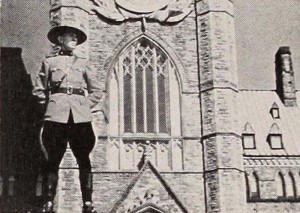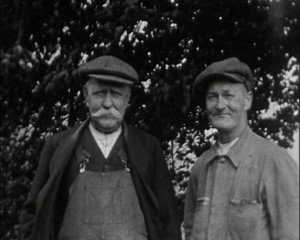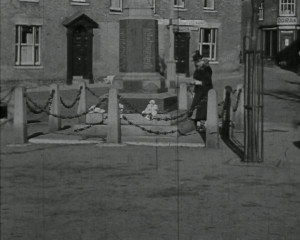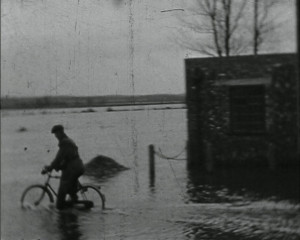
"Sweeping in its conception, stirring in its execution, Then Came the King is a vivid and beautiful epic of honest patriotism. In it, Earl L. Clark has examined the Western way of life, and he has found it good. With elaborate but never exhausting detail, the film traces the history of Canada — and more briefly her American neighbor — from 1800 to the present day. Then, in a world challenged by war and a Canada accused of waning fealty to the Empire, Then Came the King pictures with a magnificent climax the deep and unfaltering affection in which a loyal people hold their rulers. People of all classes and occupations are shown saluting Their Majesties. Sensitively planned and superbly titled, the film very definitely has something to say — and says it with distinction. Viewpoint after viewpoint strikes sensuously on the eye as exactly right for the effect desired. Sequence after sequence marches down the screen with the brave and stirring rhythms of epic poetry. On a few occasions, Mr. Clark's striking imagination has outstripped his straining technical skill, but. from his first frame to his last, the work is stamped unerringly with a fresh and genuine creative spirit." Movie Makers, Dec. 1939, 632.
A golfer is knocked out by a golf ball and dreams his friends are ballet dancers as well as other surreal incidents.
"There Runs No River: Francis J. Barrett, who entered one of the top prize winning films in our 1950 competition, again displays his fine camera technique in this 8mm black-and-white narrative of contemporary life in drab surroundings. An excellent music and sound recording on tape enhances the presentation of this commendable amateur effort." American Cinematographer, May 1951, 192.
"There Was a Tramp has, at first fade-in, a similarity to other tramp pictures, but the life breathed into the main character is what brings this film out of the ordinary and sets it apart from the rest. The story line becomes almost secondary to the acting of the tramp and his portrayal" PSA Journal, Aug. 1967, 36.
"These Bloomin' Plants, by Eugene L. Ritzmann, has been given Honorable Mention because of the striking technical tour de force which it represents. In it, Mr. Ritzmann has pictured, by means of a camera controlled by a mechanism of his own design and construction, the actual blossoming of some half dozen or more flowers. Through this device of time condensation, buds are seen bursting open before one's eyes, often in cascades of beauty which vividly suggest the magic of colored fireworks against a night sky. The technical management of this difficult and esoteric phase of photography was almost without flaw. In the opinion of the judges, however, Mr. Ritzmann failed to do full justice to his material, both in his editing and in his title treatment." Movie Makers, Dec. 1936, 551.

"Local newsreel on events in Thetford filmed by Ben Culey, showing the Palace Cinema, which he owned and where people came to see his local news films." (EAFA Database)

"Local sound newsreel, made by Ben Culey, showing Armistice Sunday parade and remembrance ceremonies." (EAFA database)

"Local sound newsreel, made by Ben Culey, shows the floods at Lakenheath." (EAFA)
"They Brought India With Them is the story of many of the natives of India who have moved to South Africa to make their home. This film points out that they didn't take to So. African ways as much as they brought their own ways and customs with them" PSA Journal, Aug. 1967, 37.
Total Pages: 299